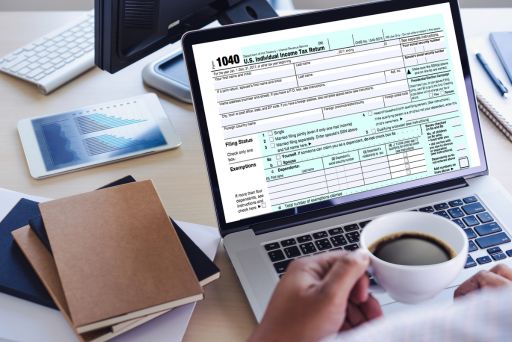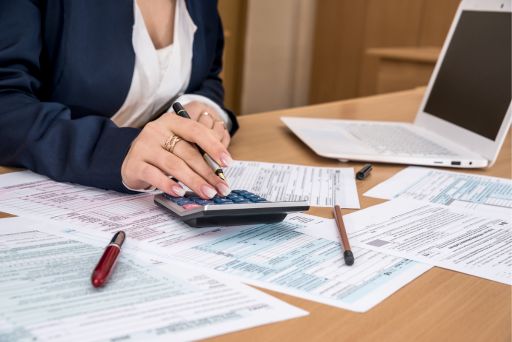Small business owners shoulder various responsibilities, and among the most crucial is understanding and managing tax obligations. Navigating the intricacies of small business taxes can seem daunting, but with a systematic approach and comprehension of essential concepts, owners can streamline the process and ensure compliance. This comprehensive guide elucidates the fundamental steps involved in calculating small business taxes, shedding light on crucial aspects like self-employment tax, tax deductions, payroll taxes, and more.
Understanding Small Business Taxes
Components of Small Business Taxes
Self-Employment Tax
Most small business owners are liable for self-employment tax, which covers social security and medicare taxes. Calculated based on net business income, this tax mirrors the contributions of employees and needs to be factored into the overall tax liability.
Taxable Income and Tax Deductions
Determining taxable income involves assessing the business’s taxable income after deducting business expenses and legitimate tax deductions. Scrutinizing expenses that qualify as deductions, such as operating costs, equipment, and employee wages, significantly impacts the taxable income and, consequently, the tax bill.

Small Business Tax Obligations
Small business owners are subject to a spectrum of taxes, including but not limited to federal income taxes, self-employment taxes, and state income taxes. The tax structure can vary based on the business structure (sole proprietorship, partnership, corporation, etc.) and the nature of operations. Understanding these taxes is pivotal to ascertain the accurate amount due.
Before delving into the methodology of computing business taxes, it’s essential to establish a foundational understanding. While the term business tax is frequently synonymous with federal income tax, it broadly encompasses the diverse taxes applicable to your business operations.
Familiarity with these tax categories holds paramount importance in upholding your business’s compliance with both the IRS and other relevant taxing authorities.
Federal Income Taxation
Federal income taxes likely ring a bell. Similar to filing individual income tax returns annually to the IRS, businesses must also calculate their taxable income and settle federal income taxes. This necessitates periodic quarterly payments throughout the year to meet tax obligations.
State and Regional Taxation
Another critical facet in the calculus of business taxes is the realm of state and local taxes.
States, cities, and counties impose various taxes on small enterprises. Business owners should be mindful of an array of state and local taxes that might be applicable, including:
- Income taxes at state, city, and county levels
- Net profit taxes
- Gross receipts taxes
- Franchise taxes
Self-Employment Levies
Entrepreneurs and freelancers, distinct from salaried employees, have the obligation of remitting self-employment tax alongside federal income tax.
This particular levy encompasses Social Security and Medicare taxes, typically withheld by employers from employee paychecks, where both employers and employees share these payments. However, for non-employees, the responsibility lies in covering both the employee and employer portions of Social Security and Medicare tax.
Payroll Taxation
Does your business maintain a staff? If so, it bears the responsibility for payroll taxes.
Payroll taxes serve as contributions toward Social Security, Medicare, and unemployment programs. It’s imperative for businesses to compute and remit these taxes quarterly to the IRS.
Miscellaneous Small Business Taxes
Small-scale enterprises may encounter an assortment of additional taxes, contingent upon individual circumstances. A few noteworthy business tax variations include:
- Sales and use tax
- Withholding tax
- Franchise tax
- Property tax
- Excise tax
Should uncertainty loom regarding the applicability of these taxes to your enterprise, seeking guidance from a tax professional is advisable. Services such as 1-800Accountant specialize in aiding businesses to remain compliant with their small business tax obligations.

Calculating Small Business Taxes
Understanding Tax Rates and Brackets
The tax rate applicable to a small business largely depends on its taxable income. Tax rates can vary and might fall within different tax brackets. Grasping these brackets and corresponding rates is crucial to compute the precise tax obligation.
Determining Tax Liability
To calculate business taxes, owners need to estimate their taxable income and apply the relevant tax rate. This computation reveals the anticipated tax liability before factoring in tax credits and other adjustments.
Calculate Your Taxable Income
Your company must estimate its taxable income and submit quarterly estimated tax payments. Following the year-end, you’ll undertake a similar procedure to compile the federal tax return.
Begin by collecting your documents to ascertain the total receipts and business expenses for the year.
Sum up your receipts, then deduct business expenses to determine your net business income.
Frequently Missed Tax Deductions and Credits Not sure if your business qualifies for deductions and credits?
Consider these potential overlooked deductions and tax credits for businesses:
Deductions:
- Deduction for qualified business income (QBI)
- Home office deduction
- Self-employed health insurance deduction
Tax Credits:
- Credit for self-employment tax
- Work Opportunity Tax Credit
- Employee Retention Tax Credit
Interested in optimizing your deductions to reduce your tax liability? We suggest collaborating with a professional specializing in business taxes.
Managing Tax Payments
Estimated Taxes and Tax Payments
Small business owners are typically required to pay estimated taxes quarterly to avoid penalties. These payments cover income taxes as well as self-employment taxes and assist in managing tax obligations effectively.
Utilizing Tax Professionals
Engaging a tax professional can be invaluable, especially when dealing with complex tax laws and regulations. A tax professional offers expert guidance, ensures compliance, and helps in maximizing tax credits and deductions.
Finalizing Tax Filings
Filing Tax Returns
Ensuring accurate and timely submission of business tax returns is essential to prevent penalties or fines. Small business owners need to compile all financial records, including income statements and expense receipts, to prepare and file the tax return.

Conclusion
In conclusion, comprehending the nuances of small business taxes is pivotal for small business owners to effectively manage their tax responsibilities. From grasping taxable income to navigating tax deductions and understanding the implications of self-employment tax, a comprehensive understanding empowers owners to optimize their tax strategy. Seeking professional advice, staying updated on tax laws, and maintaining meticulous financial records are key steps toward ensuring compliance and minimizing tax liabilities for small businesses.
Navigating the realm of business taxes may seem overwhelming, but with a clear understanding of the intricacies involved, small business owners can confidently navigate tax obligations, ensuring financial stability and compliance with regulatory requirements.
FAQs on Calculating Small Business Taxes
1. What are the primary components of small business taxes? Small business taxes comprise various elements, including federal income taxes, self-employment taxes, state and local taxes, payroll taxes, and additional taxes based on specific circumstances.
2. How is self-employment tax calculated, and who is liable for it? Self-employment tax, covering social security and medicare taxes, is calculated based on net business income. Most small business owners, freelancers, and entrepreneurs are liable for this tax.
3. What deductions impact taxable income for small businesses? Deductions such as operating costs, equipment expenses, and employee wages significantly affect taxable income. Recognizing legitimate deductions is crucial in reducing the overall tax bill.
4. What are the key steps in calculating taxable income for small businesses? To calculate taxable income, gather financial records, sum up total receipts, deduct business expenses, and explore potential deductions and credits available for businesses.
5. Why should small business owners consider consulting tax professionals? Engaging tax professionals is recommended for navigating complex tax laws, maximizing deductions and credits, ensuring compliance, and managing tax payments effectively.





































